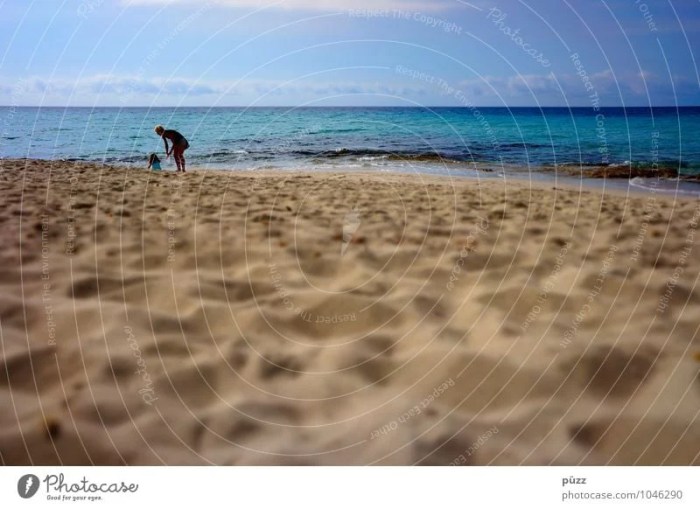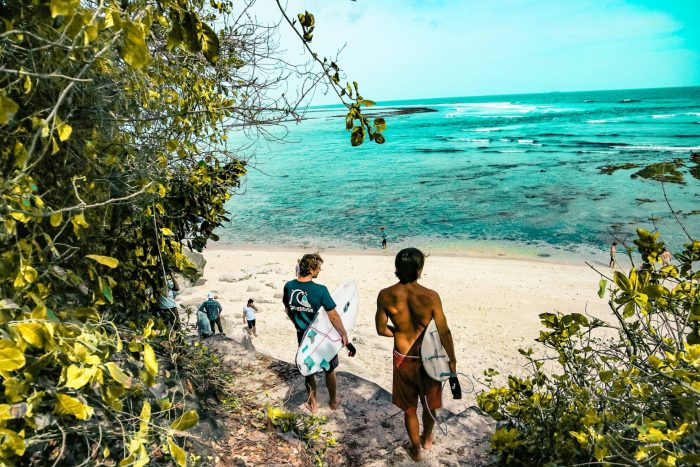Beachy Hobby: More than just sunbathing, the term encompasses a vibrant world of leisure activities. From the tranquil pursuit of seashell collecting to the adrenaline rush of surfing, beach hobbies offer diverse ways to connect with nature and enjoy the coastal lifestyle. This exploration delves into the various facets of these pursuits, examining popular activities, necessary equipment, safety considerations, and the rich communities they foster.
This guide provides a comprehensive overview of beach hobbies, categorizing them by activity level, equipment needs, and skill requirements. We’ll also delve into the environmental impact of these activities and highlight sustainable practices to ensure the preservation of our precious coastal ecosystems. Discover the perfect beach hobby to match your skill level and interests, and learn how to enjoy the coast responsibly.
Popular Beachy Hobbies

Beachcombing, sunbathing, and swimming are just the tip of the iceberg when it comes to enjoying the coastal lifestyle. Numerous activities cater to diverse interests and fitness levels, transforming a simple beach trip into a fulfilling and engaging experience. The following explores a range of popular beach hobbies, categorized for clarity and ease of understanding.
Beach Hobbies by Activity Level
The following table categorizes ten popular beach hobbies based on their activity level, providing a quick overview of the physical exertion involved.
| Low Activity | Medium Activity |
|---|---|
| Beachcombing: Searching for shells, sea glass, and other interesting objects washed ashore. This relaxed hobby offers a meditative escape and the chance to discover unique treasures. | Surfing: Riding ocean waves using a surfboard. Requires balance, coordination, and strength, offering a thrilling workout. |
| Sunbathing: Relaxing on the beach, absorbing the sun’s rays. A passive activity ideal for rest and relaxation. | Kayaking/Paddleboarding: Exploring coastal waters using a kayak or paddleboard. Offers a moderate workout and a unique perspective of the coastline. |
| Beach Yoga/Meditation: Practicing yoga or meditation on the beach, utilizing the calming sounds and atmosphere. Promotes relaxation and mindfulness. | Beach Volleyball: Playing volleyball on the sand. A fun, social activity requiring teamwork and agility. |
| Seashell Collecting: Gathering and organizing seashells found on the beach. A relaxing hobby with potential for creating decorative displays. | Bodyboarding: Riding waves using a bodyboard. Less demanding than surfing, but still provides a good workout. |
| Picnicking: Enjoying a meal on the beach. A low-activity option perfect for socializing and enjoying the scenery. | Fishing: Casting a line from the shore or a pier. Can be a relaxing or more active pursuit depending on the technique and location. |
Detailed Beach Hobby Overview
This table provides a more comprehensive look at ten popular beach hobbies, including equipment needs and skill level requirements.
| Hobby Name | Description | Equipment Needed | Skill Level |
|---|---|---|---|
| Beachcombing | Searching for shells, sea glass, and other treasures washed ashore. | A bag or container for collecting finds. | Beginner |
| Sunbathing | Relaxing on the beach, absorbing the sun’s rays. | Towel, sunscreen. | Beginner |
| Seashell Collecting | Gathering and organizing seashells. | Bags, containers for storage and organization. | Beginner |
| Picnicking | Enjoying a meal on the beach. | Food, drinks, blanket. | Beginner |
| Beach Yoga/Meditation | Practicing yoga or meditation on the beach. | Yoga mat (optional). | Beginner – Intermediate (depending on practice) |
| Surfing | Riding ocean waves using a surfboard. | Surfboard, wetsuit (depending on conditions). | Intermediate – Advanced |
| Bodyboarding | Riding waves using a bodyboard. | Bodyboard. | Beginner – Intermediate |
| Kayaking/Paddleboarding | Exploring coastal waters. | Kayak or paddleboard, paddle, life vest. | Beginner – Intermediate |
| Beach Volleyball | Playing volleyball on the sand. | Volleyball, net (optional). | Beginner – Intermediate |
| Fishing | Casting a line from the shore or pier. | Fishing rod, reel, bait, tackle. | Beginner – Advanced (depending on technique) |
Equipment and Materials for Beach Hobbies: Beachy Hobby

Beachcombing, surfing, and beach volleyball are popular pastimes, each requiring specific equipment and materials. The choice of gear significantly impacts the enjoyment and safety of these activities, while also influencing the environmental footprint of the hobby. Careful consideration of both functionality and sustainability is crucial for responsible beach recreation.
Essential Equipment Checklist for Beach Hobbies
Selecting the right equipment is paramount for a safe and enjoyable beach experience. The following checklists provide a comprehensive overview of necessary items for three popular beach activities. Improper equipment can lead to injury or a less satisfying experience.
- Beachcombing: A sturdy bucket or bag for collecting finds, comfortable walking shoes suitable for sand and potentially wet conditions, sunscreen, a hat for sun protection, a magnifying glass for examining small items, gloves (optional, for handling sharp objects or debris), a field guide to local shells or beach treasures, and a camera to document discoveries.
- Surfing: A surfboard appropriate for skill level and wave conditions (longboard, shortboard, funboard), a leash to secure the board to the surfer, wetsuit or rashguard for warmth and protection, surfboard wax for grip, sunscreen, a hat, and potentially a waterproof watch for timing sets.
- Beach Volleyball: A volleyball, a net (portable or permanently installed), boundary markers (cones or flags), comfortable athletic shoes suitable for sand, sunscreen, hats, and water bottles. Depending on the intensity and duration of play, players might also consider knee pads or elbow pads for added protection.
Commonly Used Materials Categorized by Hobby Type
The materials used in beach activities vary considerably depending on the specific hobby. Understanding these materials helps in making informed choices about sustainability and minimizing environmental impact.
- Beachcombing: Primarily involves naturally occurring materials like shells, sea glass, driftwood, and seaweed. However, some beachcombers may use plastic containers for storage, which contributes to plastic waste if not properly recycled or disposed of.
- Surfing: Surfboards are typically constructed from polyurethane foam and fiberglass, or increasingly, from sustainable materials like recycled plastics or wood. Leashes are usually made from durable rubber or polyurethane. Wetsuits often contain neoprene, a synthetic rubber derived from petroleum. Sunscreen, a vital material, can contain chemicals harmful to marine life if not specifically formulated as reef-safe.
- Beach Volleyball: Volleyballs are usually made from synthetic leather or rubber, and nets from nylon or polyethylene. Boundary markers may be made from plastic or other durable materials. Water bottles can be made from plastic, reusable materials such as stainless steel or aluminum.
Environmental Impact of Beach Hobby Equipment and Materials
The environmental impact of beach activities is a growing concern. Many commonly used materials can harm the delicate marine ecosystem.
The use of single-use plastics, such as plastic water bottles and bags, is a significant contributor to beach pollution. Sunscreens containing oxybenzone and octinoxate can damage coral reefs. Improper disposal of equipment and materials can also lead to habitat degradation. The production and disposal of synthetic materials used in surfboards and wetsuits have carbon footprints. Choosing biodegradable or recycled alternatives whenever possible is crucial for minimizing the environmental impact of beach hobbies.
Sustainable practices, including responsible waste disposal and the use of eco-friendly products, are essential for preserving the health of our beaches and oceans. For example, choosing reef-safe sunscreens and supporting companies that use recycled materials in their equipment production can significantly reduce the negative impact of these activities.
Illustrative Examples of Beach Hobbies

Beachcombing, seashell crafting, and beach photography offer diverse avenues for leisure and creative expression, each demanding unique skills and yielding distinct rewards. These activities engage different senses and provide unique opportunities for connection with the coastal environment.
Beachcombing: A Treasure Hunt on the Shoreline, Beachy Hobby
Beachcombing involves exploring the shoreline in search of interesting objects washed ashore by the tide. The process is inherently unpredictable, driven by the whims of the ocean. One might spend hours meticulously sifting through sand, the grains cool and damp against fingertips, only to unearth a small, perfectly formed sea glass shard, its edges smoothed by years of tumbling waves.
The thrill of discovery, the tactile experience of finding something unique, and the satisfying weight of a well-filled bag at the end of a day are all part of the appeal. Successful beachcombing often requires patience, keen observation, and a good eye for detail. The treasures found—driftwood, shells, sea glass, unusual rocks—can be kept as mementos or incorporated into various crafts.
Seashell Crafting: Transforming Nature’s Art
Seashell crafting transforms the naturally beautiful shells collected during beachcombing into unique works of art. The process begins with careful selection of shells, choosing those with interesting shapes, colors, and textures. The rhythmic sound of shells tapping against each other as they are cleaned and sorted is a meditative aspect of the process. Then, depending on the chosen project, shells might be glued together to create mobiles, incorporated into jewelry, or used to decorate picture frames.
The creative possibilities are endless, limited only by imagination and skill. The tactile nature of working with shells—their smooth surfaces, delicate edges, and varied weights—provides a sensory experience that complements the visual appeal of the final product. The subtle scent of the ocean might even linger on some shells, adding another layer to the experience.
Beach Photography: Capturing the Ephemeral Beauty of the Coast
Beach photography focuses on capturing the beauty and dynamism of the coastal landscape. This hobby requires an understanding of composition, light, and timing. The photographer must be attuned to the ever-changing conditions: the interplay of light and shadow, the movement of waves, and the subtle shifts in color throughout the day. The salty air, the feel of sand between toes, and the sound of crashing waves provide a constant backdrop to the photographic process.
The photographer seeks to capture the essence of the beach—the vastness of the ocean, the texture of the sand, the details of the shells and seaweed, and the way the light dances on the water. The challenge lies in capturing the fleeting moments of beauty and translating them into lasting images.
Sensory Experience of Beachcombing
The sensory experience of beachcombing is richly layered. The cool, damp sand underfoot, the salty tang of the sea air filling the lungs, the rhythmic sound of the waves crashing against the shore—these elements create a calming and invigorating atmosphere. The tactile exploration of shells, rocks, and other treasures found along the shoreline adds another dimension, providing a constant source of surprise and delight.
The visual spectacle of the ocean, the sky, and the shoreline itself provides a constantly changing backdrop to the activity.
Sensory Experience of Seashell Crafting
Crafting with seashells provides a different sensory experience. The smooth, cool texture of the shells under the fingertips is a constant tactile reminder of their origin. The subtle scent of the ocean might still linger on some shells, adding a nostalgic element to the process. The visual appeal of the shells, their varied colors and patterns, inspires creativity and encourages experimentation.
The sounds of gluing, cutting, and assembling add a rhythmic element to the experience, creating a sense of calm and focus.
Visual Representation of Beach Scene
Imagine a sun-drenched beach. A gentle breeze rustles through the seagrass at the water’s edge. A woman sits on a weathered driftwood log, meticulously arranging a collection of colorful seashells into a spiraling pattern on a piece of smooth, sun-bleached wood. The shells gleam in the sunlight, their delicate textures and varied colors a vibrant contrast to the muted tones of the wood and the sand.
The ocean stretches out before her, a vast expanse of turquoise water meeting the horizon in a hazy blend of blue and white. The scene is peaceful, meditative, and filled with the quiet beauty of the coastal environment.
Comparing Different Beach Hobbies

Beach hobbies offer diverse avenues for relaxation and recreation, each demanding varying levels of investment and expertise. A comparative analysis reveals significant differences in cost, skill acquisition, and the time commitment required. Understanding these distinctions helps individuals select activities best suited to their resources and preferences.
A Cost and Time Comparison: Shell Collecting vs. Surfing
Shell collecting and surfing represent two contrasting beach hobbies. Shell collecting, a relatively low-cost activity, requires minimal equipment beyond a bucket and perhaps a field guide. The time commitment is flexible, ranging from a brief stroll along the shoreline to more extensive searches. In contrast, surfing necessitates a substantial financial investment in a surfboard, wetsuit (depending on location and season), and potentially lessons.
The time commitment is also significantly greater, requiring consistent practice and often dependent on favorable wave conditions. While shell collecting offers a leisurely, low-pressure pursuit, surfing demands a higher level of physical fitness and dedication.
Pros and Cons of Three Popular Beach Hobbies
The advantages and disadvantages of various beach activities should be carefully considered. This provides a balanced perspective before committing to a particular pastime.
- Beach Volleyball: Pros: Excellent cardiovascular workout, social interaction, readily accessible equipment. Cons: Requires a degree of athleticism and coordination, weather dependent, can be competitive.
- Beachcombing: Pros: Relaxed pace, inexpensive, opportunity for discovery and collection of unique items. Cons: Dependent on tides and weather, can be physically demanding over long periods, requires patience.
- Kiteboarding: Pros: Thrilling and exhilarating, full-body workout, stunning views. Cons: High initial equipment cost, requires significant skill and training, potentially dangerous if not undertaken safely.
Comparative Analysis of Five Beach Hobbies
A structured comparison highlights the key differences between several popular choices.
| Hobby | Pros | Cons |
|---|---|---|
| Shell Collecting | Relaxing, inexpensive, educational | Weather dependent, can be time-consuming for significant finds |
| Surfing | Excellent workout, exhilarating experience | High initial cost, requires skill and practice, weather dependent |
| Beach Volleyball | Social, good workout, readily accessible | Requires athleticism, weather dependent, can be competitive |
| Beachcombing | Relaxing, inexpensive, opportunities for discovery | Weather dependent, can be physically demanding |
| Kiteboarding | Thrilling, full-body workout | High cost, requires significant skill and training, potentially dangerous |
Whether you’re a seasoned beachgoer or a curious newcomer, the world of beach hobbies offers endless opportunities for relaxation, adventure, and connection with the natural world. By understanding the nuances of each activity, prioritizing safety, and embracing sustainable practices, you can ensure a rewarding and environmentally responsible experience. So grab your gear, head to the shore, and discover the joy of your perfect beachy hobby.

